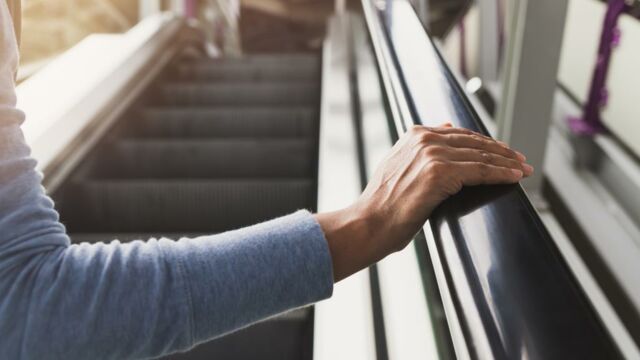Events from the past year have left us sanitising our hands after every time we touch a cash machine, public railings and even doorknobs. However, a recent study shows that the risk of catching coronavirus by touching surfaces is actually pretty low.
Discover our latest podcast
You probably won’t catch COVID from a doorknob
Researchers carried out the study in Boston, the Massachusetts city home to roughly 700,000 people. Between April and June last year, scientists swabbed hundreds of public surfaces like supermarket door handles, post boxes and bin lids, every week only to find that catching coronavirus from these surfaces was unlikely.
Out of the hundreds of samples taken, coronavirus was only discovered on 29 swabs or 8% of the samples. And, even on the surfaces where coronavirus was detected, it was in such small amounts that risk of infection was found to be as low as one in 2,000.
Researchers also found that surfaces were more likely to test positive for the virus in areas with a high level of infection. This could also give way to a new system that detects emerging outbreaks in communities, as when infected people may not show symptoms for a week or more if at all.
The study adds to the body of research proving that coronavirus is not easily spread by surfaces and that the main way people contract the virus is actually through water droplets expelled during coughing, sneezing and even breathing. Researchers from Tufts university wrote:
The estimated risk of infection from touching a contaminated surface was low (less than five in 10,000). [This] suggests fomites (objects likely to carry infection) play a minimal role in SARS-CoV-2 community transmission.
You should still take caution in public
Despite researchers discovering the low risk of transmission via surfaces, they are still recommending that people wash and sanitize their hands whenever touching public surfaces. This is because even in the rare instance you touch a surface holding the virus, you could still become infected if you accidentally touch your nose or mouth.
The government’s ‘Hands, Face, Space’ campaign urges people to sanitise their hands, use their face masks and maintain social distancing while out in public. The campaign advises that along with lockdowns, these are the three most important actions to reduce the spread of the virus.
Which public surfaces are more likely to carry COVID?
A one in 2,000 chance is still pretty high when you’re in a city of 700,000 like Boston or 8.9 million like London. So you might still be wondering which surfaces are more likely to contain coronavirus? Here’s what the study found:
- Bin handle - 25% (4 positives out of 16 swabs)
- Off-licence shop - 15% (3 positives out of 20 swabs)
- Bank door handle or ATM - 13.3% (4 positives out of 30 swabs)
- Metro door - 12.5% (2 positives out of 16 swabs)
- Supermarket door or basket - 11.1% (4 positives out of 36 swabs)
- Pedestrian crossing button - 10.4% (5 positives out of 48 swabs)
- Petrol station pumps or door handles - 6.9% (4 positives out of 29 swabs)
- Laundrette door handle - 5.6% (2 positives out of 36 swabs)
- Restaurant door handle - 3.3% (1 positive out of 30 swabs)
- Corner shop - 0% (no positives out of 20 swabs)
- Post office box - 0% (no positives out of 7 swabs)















